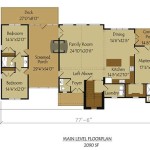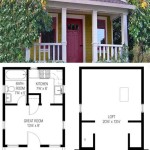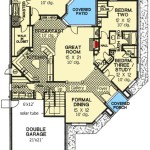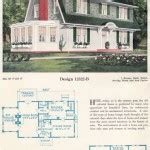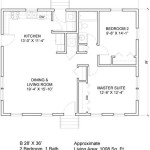Tiny house plans cost to build encompasses the financial expenses associated with constructing a compact, typically under 400 square foot, dwelling. Whether you aspire to embrace a minimalist lifestyle, downsize for retirement, or build a sustainable, eco-friendly home, understanding the cost involved is crucial.
Factors influencing cost include materials, labor, permits, and appliances. For instance, a basic shell with minimal amenities may cost around $15,000, while a fully equipped tiny house on wheels can reach $60,000 or more. DIY construction can save money, but it requires ample time, skills, and resources.
Exploring the ins and outs of tiny house plans cost to build empowers you to make informed decisions and budget effectively. Let’s delve deeper into the specific cost factors and strategies for building your dream tiny home.
Consider these key points when exploring tiny house plans cost to build:
- Materials: Wood, metal, or composite
- Labor: DIY or professional contractors
- Permits: Local building codes and regulations
- Appliances: Size, energy efficiency, and features
- Foundation: Type and complexity
- Roofing: Materials, pitch, and insulation
- Windows and doors: Size, style, and materials
- Plumbing: Fixtures, pipes, and water heater
- Electrical: Wiring, outlets, and lighting
Understanding these factors will help you estimate the cost to build your tiny house and make informed decisions.
Materials: Wood, metal, or composite
The choice of materials for your tiny house will significantly impact its cost. Wood, metal, and composite materials each offer unique advantages and disadvantages:
Wood
Wood is a popular choice for tiny houses due to its versatility, affordability, and ease of construction. Common types of wood used include pine, cedar, and fir. Wood-framed tiny houses typically cost between $15,000 to $30,000 for materials, depending on the size and complexity of the design.
Advantages of wood:
- Affordability
- Easy to work with
- Durable and long-lasting
- Aesthetically pleasing
Disadvantages of wood:
- Susceptible to rot and moisture damage
- Requires regular maintenance
- May not be as fire-resistant as other materials
Metal
Metal is another option for tiny house construction, offering durability and fire resistance. Steel and aluminum are the most common types of metal used, with steel being more cost-effective and aluminum providing better corrosion resistance. Metal-framed tiny houses typically cost between $20,000 to $40,000 for materials.
Advantages of metal:
- Durable and long-lasting
- Fire-resistant
- Resistant to rot and moisture damage
- Lightweight and easy to transport
Disadvantages of metal:
- More expensive than wood
- Can be more difficult to work with
- May not be as aesthetically pleasing as wood
Composite materials
Composite materials, such as fiberglass and structural insulated panels (SIPs), offer a combination of the advantages of wood and metal. They are durable, moisture-resistant, and fire-resistant. Composite-framed tiny houses typically cost between $25,000 to $45,000 for materials.
Advantages of composite materials:
- Durable and long-lasting
- Moisture-resistant and fire-resistant
- Lightweight and easy to transport
- Can be aesthetically pleasing
Disadvantages of composite materials:
- More expensive than wood or metal
- Can be difficult to repair
- May not be as versatile as wood or metal
The choice of materials for your tiny house will ultimately depend on your budget, lifestyle, and preferences. Consider the advantages and disadvantages of each material before making a decision.
Labor: DIY or professional contractors
The cost of labor for building a tiny house can vary significantly depending on whether you choose to do it yourself (DIY) or hire professional contractors.
- DIY (Do It Yourself)
If you have the skills and experience, building a tiny house yourself can save you a considerable amount of money on labor costs. However, it is important to factor in the time and effort required, as well as the potential for mistakes. For a basic tiny house, you can expect to spend around 500-1000 hours on construction. At a minimum wage of $15 per hour, this equates to $7,500-$15,000 in labor costs. However, if you have to hire skilled tradespeople for certain tasks, such as electrical or plumbing, the cost will increase.
- Professional contractors
Hiring professional contractors to build your tiny house will likely cost more than DIY, but it can save you time and hassle. Professional contractors have the experience and expertise to ensure that your tiny house is built to code and meets all safety standards. The cost of hiring contractors will vary depending on their experience, location, and the complexity of your project. For a basic tiny house, you can expect to pay around $20,000-$40,000 for labor costs.
Ultimately, the decision of whether to build your tiny house yourself or hire professional contractors depends on your budget, skills, and time constraints. If you are on a tight budget and have the necessary skills, DIY can be a great way to save money. However, if you want a high-quality tiny house built quickly and efficiently, hiring professional contractors is the best option.
Permits: Local building codes and regulations
Before you start building your tiny house, it is important to obtain the necessary permits from your local building department. Building codes and regulations vary from place to place, so it is important to check with your local building department to find out what permits are required for your project.
In general, you will need to obtain a building permit, which will allow you to construct your tiny house. You may also need to obtain permits for electrical, plumbing, and mechanical work. The cost of permits will vary depending on the size and complexity of your project, as well as the location of your property.
It is important to factor the cost of permits into your budget when building a tiny house. The cost of permits can range from a few hundred dollars to several thousand dollars. If you are not sure how much the permits will cost, you can contact your local building department for an estimate.
Once you have obtained the necessary permits, you can begin construction on your tiny house. It is important to follow all building codes and regulations when constructing your tiny house. This will ensure that your tiny house is safe and habitable.
Failure to obtain the necessary permits can result in fines or even having to demolish your tiny house. It is also important to note that building codes and regulations are constantly changing, so it is important to check with your local building department to make sure you are up to date on the latest requirements.
Appliances: Size, energy efficiency, and features
Size
The size of the appliances you choose for your tiny house will depend on the size of your house and your lifestyle. If you have a small tiny house, you will need to choose appliances that are compact and space-saving. There are many small appliances available on the market, such as mini-fridges, microwaves, and stackable washer/dryers.
Energy efficiency
Energy efficiency is an important consideration when choosing appliances for your tiny house. Energy-efficient appliances will help you to save money on your energy bills and reduce your environmental impact. Look for appliances with the Energy Star label, which indicates that they meet certain energy efficiency standards.
Features
The features you choose for your appliances will depend on your personal preferences. Some appliances come with a variety of features, such as automatic defrost, self-cleaning, and temperature control. Consider which features are important to you and choose appliances that have those features.
Paragraph after details
The cost of appliances for your tiny house will vary depending on the size, energy efficiency, and features you choose. However, you can expect to spend around $2,000-$5,000 on appliances for a basic tiny house. If you choose high-end appliances, the cost could be even higher.
Foundation: Type and complexity
Slab foundation
A slab foundation is a flat, reinforced concrete pad that is poured directly on the ground. Slab foundations are relatively simple to build and are a good option for level building sites. The cost of a slab foundation will vary depending on the size of your tiny house and the thickness of the concrete. However, you can expect to pay around $5,000-$10,000 for a slab foundation.
Pier foundation
A pier foundation consists of concrete piers that are buried in the ground and support the weight of the tiny house. Pier foundations are a good option for sloping building sites or areas with poor soil conditions. The cost of a pier foundation will vary depending on the number of piers required and the depth of the piers. However, you can expect to pay around $6,000-$12,000 for a pier foundation.
Skirt foundation
A skirt foundation is a type of foundation that is made of concrete blocks or poured concrete that is placed around the perimeter of the tiny house. Skirt foundations are a good option for areas with high winds or flooding. The cost of a skirt foundation will vary depending on the size of your tiny house and the type of materials used. However, you can expect to pay around $7,000-$15,000 for a skirt foundation.
Crawlspace foundation
A crawlspace foundation is a type of foundation that consists of a raised floor that is supported by piers or beams. Crawlspace foundations are a good option for areas with high humidity or flooding. The cost of a crawlspace foundation will vary depending on the size of your tiny house and the type of materials used. However, you can expect to pay around $8,000-$18,000 for a crawlspace foundation.
The type of foundation you choose for your tiny house will depend on the size of your house, the building site, and your budget. It is important to consult with a qualified contractor to determine the best type of foundation for your project.
Roofing: Materials, pitch, and insulation
Materials
The choice of roofing material for your tiny house will depend on a number of factors, including the climate, the pitch of the roof, and your budget. Some of the most popular roofing materials for tiny houses include:
- Asphalt shingles: Asphalt shingles are a popular choice for tiny houses because they are relatively inexpensive, easy to install, and durable. However, asphalt shingles are not as fire-resistant as some other roofing materials.
- Metal roofing: Metal roofing is a good choice for tiny houses in areas with high winds or hail. Metal roofing is also fire-resistant and durable. However, metal roofing can be more expensive than other roofing materials.
- Tile roofing: Tile roofing is a good choice for tiny houses in warm climates. Tile roofing is durable and fire-resistant. However, tile roofing can be more expensive and heavier than other roofing materials.
Pitch
The pitch of your roof is the angle at which it slopes. The pitch of your roof will affect the amount of sunlight that your tiny house receives, as well as the amount of rain and snow that it can shed. A steeper roof pitch will shed rain and snow more easily, but it will also require more materials and labor to build. A shallower roof pitch will require less materials and labor to build, but it will not shed rain and snow as easily.
Insulation
Insulating your tiny house’s roof is important to keep it warm in the winter and cool in the summer. There are a number of different types of insulation that you can use for your roof, including fiberglass, cellulose, and spray foam. Fiberglass insulation is the most common type of insulation, and it is relatively inexpensive and easy to install. Cellulose insulation is made from recycled paper, and it is a good choice for environmentally conscious tiny house builders. Spray foam insulation is the most expensive type of insulation, but it is also the most effective.
The cost of roofing your tiny house will vary depending on the materials, pitch, and insulation that you choose. However, you can expect to pay around $2,000-$5,000 for roofing materials and labor.
Windows and doors: Size, style, and materials
The size, style, and materials of your windows and doors will affect the cost of your tiny house. Larger windows and doors will cost more than smaller ones. Custom-made windows and doors will also cost more than standard-sized windows and doors.
- Size
The size of your windows and doors will affect the amount of natural light and ventilation that your tiny house receives. Larger windows and doors will allow more light and ventilation into your tiny house, but they will also cost more to install. Smaller windows and doors will cost less to install, but they will allow less light and ventilation into your tiny house.
- Style
The style of your windows and doors will affect the overall look of your tiny house. There are a variety of window and door styles to choose from, including casement windows, double-hung windows, sliding windows, and French doors. The style of windows and doors that you choose will depend on your personal preferences and the overall design of your tiny house.
- Materials
The materials that your windows and doors are made of will affect their durability, energy efficiency, and cost. Common materials for windows and doors include wood, vinyl, aluminum, and fiberglass. Wood windows and doors are durable and energy-efficient, but they are also more expensive than vinyl, aluminum, and fiberglass windows and doors. Vinyl windows and doors are less expensive than wood windows and doors, but they are not as durable or energy-efficient. Aluminum windows and doors are durable and energy-efficient, but they can be more expensive than vinyl windows and doors. Fiberglass windows and doors are durable, energy-efficient, and relatively inexpensive.
The cost of windows and doors for your tiny house will vary depending on the size, style, and materials that you choose. However, you can expect to pay around $1,000-$5,000 for windows and doors for a basic tiny house.
Plumbing: Fixtures, pipes, and water heater
Fixtures
The cost of plumbing fixtures for your tiny house will vary depending on the type of fixtures you choose and the number of fixtures you need. Basic fixtures, such as a toilet, sink, and shower, will cost less than high-end fixtures. You can also save money by choosing fixtures that are water-efficient.
Pipes
The type of pipes you choose for your tiny house’s plumbing system will also affect the cost. Copper pipes are the most expensive type of pipes, but they are also the most durable. PEX pipes are a less expensive option, but they are not as durable as copper pipes. PVC pipes are the least expensive type of pipes, but they are also the least durable.
Water heater
The size and type of water heater you choose for your tiny house will also affect the cost. A larger water heater will cost more than a smaller water heater, and a tankless water heater will cost more than a traditional water heater. However, a tankless water heater will save you money on energy costs in the long run.
The cost of plumbing for your tiny house will vary depending on the fixtures, pipes, and water heater that you choose. However, you can expect to pay around $2,000-$5,000 for plumbing materials and labor.
Electrical: Wiring, outlets, and lighting
The cost of electrical wiring, outlets, and lighting for your tiny house will vary depending on the size of your house, the number of electrical devices you plan to use, and the complexity of your electrical system. However, you can expect to pay around $2,000-$5,000 for electrical materials and labor.
- Wiring
The wiring in your tiny house will carry electricity from the electrical panel to the various electrical devices in your house. The cost of wiring will vary depending on the length and complexity of the wiring run. You can save money on wiring by using shorter wires and by avoiding complex wiring runs.
- Outlets
Outlets are used to plug in electrical devices. The number of outlets you need will depend on the number of electrical devices you plan to use. You should also consider the location of the outlets when planning your electrical system. You want to make sure that you have enough outlets in convenient locations.
- Lighting
Lighting is an important part of any home, and your tiny house is no exception. You will need to choose lighting fixtures that are both functional and stylish. The cost of lighting will vary depending on the type of fixtures you choose and the number of fixtures you need.
- Other electrical components
In addition to wiring, outlets, and lighting, you may also need to install other electrical components, such as switches, dimmers, and fans. The cost of these components will vary depending on the type of components you choose and the number of components you need.
It is important to hire a qualified electrician to install your tiny house’s electrical system. A qualified electrician will ensure that your electrical system is safe and up to code.










Related Posts

